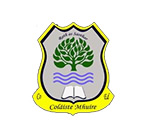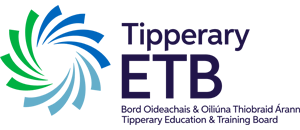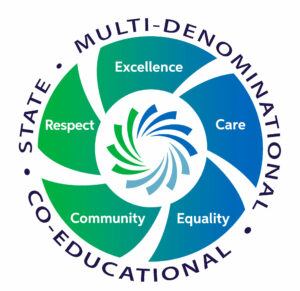Technology Education at Senior Cycle
Introduction
Technology education is an essential component of the curriculum. In a world where encounters with a wide range of technologies are part of the daily life experience of all people at work or at leisure, students should be equipped to face these encounters with the confidence which comes from learning about, through, and with a range of technologies. It is equally important that they gain an appreciation and understanding of the complex interface between technology and society. As citizens they should have the capacity to enter discussion about, and make personal judgements on, issues related to the impact of technology on their own lives, on society, and on the environment. Through technology education students grow in competence, grow in confidence, become more enterprising and are empowered in terms of their ability to control elements of the physical environment. These are important educational outcomes, which contribute significantly to the provision of a broad and balanced curriculum and illustrate why participation in technology education represents a valuable educational experience.
The nature of technology education
Technology is a distinct form of creative activity where human beings interact with their environments, using appropriate materials and processes in response to needs, wants and opportunities. It integrates problem solving and practical skills in the production of useful artefacts and systems. More specifically, the value of technology education comes from the use of the wide variety of abilities required to produce a drawing or make an artefact, leading to a sense of competence and a feeling of personal empowerment. The acquisition of manipulative skills is an important component of this sense of competence and can help to give students a feeling of control of their physical environment. In a rapidly changing global society, students need to appreciate that technological capability is necessary and relevant for all aspects of living and working. Many subjects can contribute to the development of a technological capability. However, the technology subjects, which incorporate the principles of design and realisation in a creative manner, are central to this development. Technological capability includes
- the understanding of appropriate concepts and processes
- skills of design and realisation
- the ability to apply knowledge and skills by thinking and acting confidently, imaginatively, creatively and with sensitivity
- the ability to evaluate technological activities, artefacts and systems critically and constructively.
Leaving Certificate technology subjects
Within the Leaving Certificate, technology education is provided through the subjects Architectural Technology, Engineering Technology, Design and Communication Graphics, and Technology, thereby providing progression with junior cycle. These subjects contribute to a broad, balanced and general education of students, with particular reference to their vocational, further education and training aspirations on completion of the Leaving Certificate. At a more practical level, the technology subjects at senior cycle share a number of common features. The syllabuses
- are constructed on the basis of core areas of study and optional areas of study, reflecting the different topics and sections within the subject area
- are offered at two levels, Ordinary and Higher
- have been designed for completion in 180 hours of class contact time
- place a strong emphasis on practical learning activity
- include a range of assessment components aimed at assessing student achievement in both practical and theoretical aspects of the subjects.
LEAVING CERTIFICATE TECHNOLOGY
INTRODUCTION AND RATIONALE
There is a growing awareness of the impact of technological developments on many aspects of people’s lives. Leaving Certificate Technology, by virtue of its broad treatment of topics, should help students to respond confidently to a world that is characterised by rapid change in the social, economic, work and leisure environments. The syllabus is designed to enhance the students’ ability to meet successfully the challenges they face in both their personal and their working lives. It is equally relevant to all students, whether they plan to proceed directly to employment or training, or to pursue further studies after completing Leaving Certificate. All students should become active participants in their own learning. Leaving Certificate Technology emphasises the use of knowledge, its practical application to real-life situations, and the interaction between thinking and doing. This puts decision making in the hands of the student, leading him or her to greater independence, self-confidence and personal satisfaction. The course encourages practical activities and the production of artefacts and systems as solutions to identified problems or briefs. Students taking this course should develop their problem-solving skills and a sense of responsibility for their own learning, and become self-directed, creative and autonomous learners, thus laying the foundation for lifelong learning. The development of technological capability, a central goal of technology education, can enable students to take advantage of present and emergent vocational opportunities and to become informed citizens in a rapidly changing world. This Leaving Certificate syllabus has been developed to provide greater progression from the junior cycle and should encourage more students to extend their experience of a technology education throughout their years at post-primary level. Its modular structure allows schools considerable opportunity to build on existing resources and expertise, and should enable more schools to provide a technology education for their students in the senior cycle.
AIMS
The general aims of technology education are
- to contribute to a balanced education, giving students a broad and challenging experience that will enable them to acquire a body of knowledge, understanding, cognitive and manipulative skills and competencies and so prepare them to be creative participants in a technological world
- to enable students to integrate such knowledge and skills, together with qualities of co-operative enquiry and reflective thought, in developing solutions to technological problems, with due regard for issues of health and safety
- to facilitate the development of a range of communication skills, which will encourage students to express their creativity in a practical and imaginative way, using a variety of forms: verbal, graphic, model, etc.
- to provide a context in which students can explore and appreciate the impact of past, present and future technologies on the economy, society and the environment.
The additional syllabus aims are
- to enable students become aware of the breadth of today’s technology through their experience of its practical applications in the solution of everyday problems
- to enable students, through their experience and developed understanding of the technological process, to evaluate and judge critically existing products and the products of their own work from an aesthetic, technical, functional and ethical point of view.
OBJECTIVES
The following list summarises the syllabus objectives. Particular student learning outcomes are indicated in each section of the syllabus. The problem-solving dimension of the course emphasises skills and competencies; knowledge and understanding are the foundations for the process. Successful participation in the course should reflect in student attitudes to self and to the impact of technology on the social and environmental aspects of today’s world.
On completion of the course, a student should
- know basic technological principles and facts and the terminology associated with technology
- understand, and be able to communicate, technological information in written verbal, graphic and mathematical forms
- understand the role of, and be able to apply, design principles in the solution of specific problems, using mathematical and scientific concepts where appropriate
- appreciate that technology impacts on our everyday lives and contributes to personal, social and economic development, and that technological solutions are linked with their specific cultural and environmental settings
- know and adhere to the health and safety requirements associated with planning and conducting practical work, and understand how these requirements, together with environmental considerations, affect the design of artefacts or systems
- be able to identify challenges and opportunities which can be met using a technological methodology, select appropriate methods for dealing with these and recognise the limitations and constraints of knowledge, time, resources and other factors which can restrict technological solutions to problems
- be able to work both independently and co-operatively in evaluating existing solutions and in proposing novel/creative solutions to technological challenges
- recognise that technological developments have resource implications, that resources need to be carefully managed and that developed societies have moral responsibilities in their appropriation of world resources
- be able to prepare and execute a plan for the realisation of an artefact or system as a solution to a technological problem or challenge, working accurately and safely with materials and equipment
- select and use appropriate materials, tools and equipment in the production of an artefact or system, according to a chosen design, in response to a given brief or an identified problem
- have developed a competence in the processing of materials
- be able to evaluate a completed artefact or system against its original specification, propose alterations and modifications at the design, implementation or completion stages to enhance its appearance or function
- be able to prepare and present a report in a concise, accurate and comprehensive manner.



